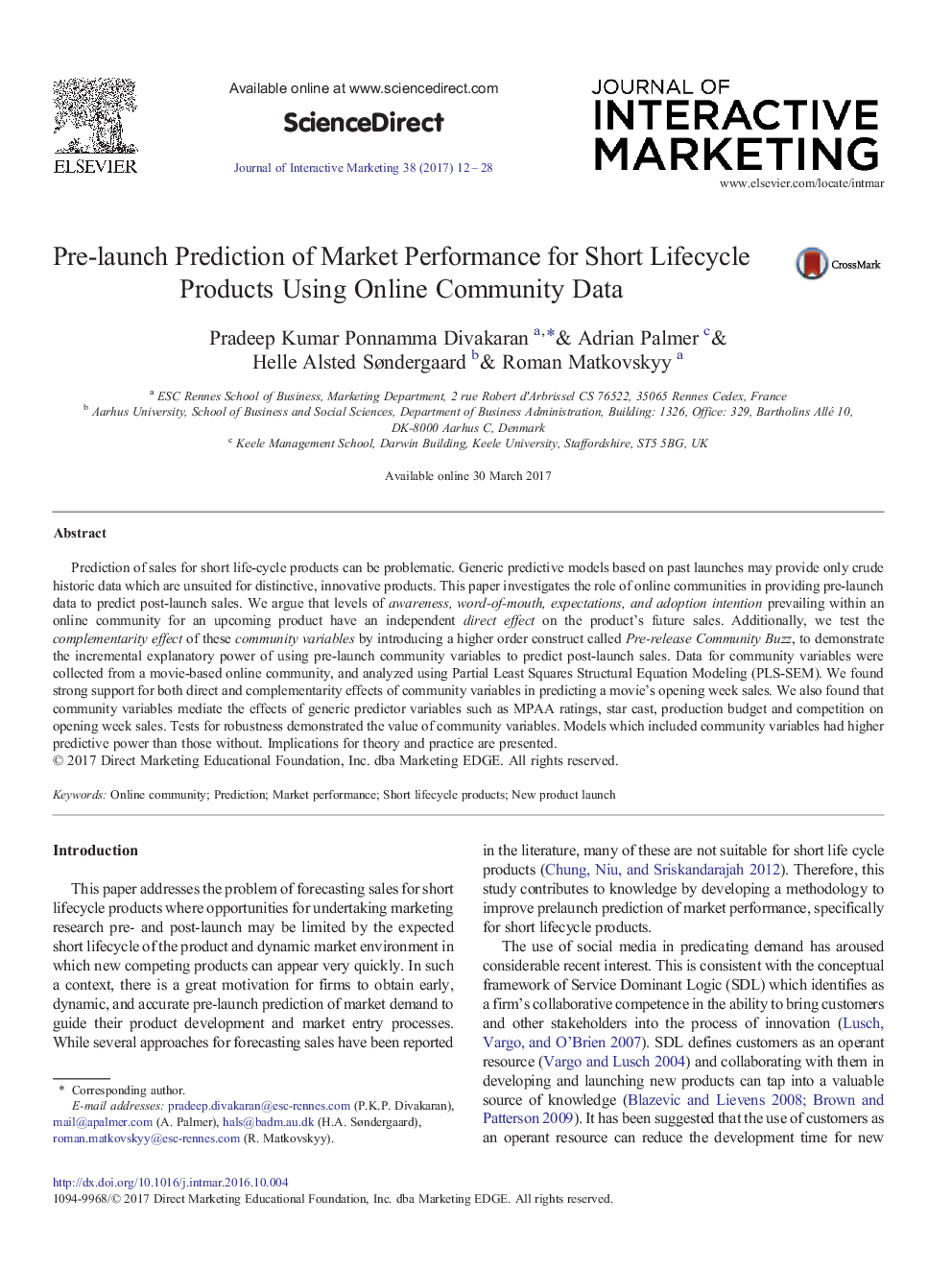| کد مقاله | کد نشریه | سال انتشار | مقاله انگلیسی | نسخه تمام متن |
|---|---|---|---|---|
| 5034977 | 1471770 | 2017 | 17 صفحه PDF | دانلود رایگان |
- Community variables predict opening week sales better than traditional variables.
- Community variables also mediate the effect of traditional variables on sales.
- Complementarity of community variables provides incremental predictive power.
- Predictive models using community variables are better than traditional models.
- Study highlights the importance of online toolkits for both users and marketers.
Prediction of sales for short life-cycle products can be problematic. Generic predictive models based on past launches may provide only crude historic data which are unsuited for distinctive, innovative products. This paper investigates the role of online communities in providing pre-launch data to predict post-launch sales. We argue that levels of awareness, word-of-mouth, expectations, and adoption intention prevailing within an online community for an upcoming product have an independent direct effect on the product's future sales. Additionally, we test the complementarity effect of these community variables by introducing a higher order construct called Pre-release Community Buzz, to demonstrate the incremental explanatory power of using pre-launch community variables to predict post-launch sales. Data for community variables were collected from a movie-based online community, and analyzed using Partial Least Squares Structural Equation Modeling (PLS-SEM). We found strong support for both direct and complementarity effects of community variables in predicting a movie's opening week sales. We also found that community variables mediate the effects of generic predictor variables such as MPAA ratings, star cast, production budget and competition on opening week sales. Tests for robustness demonstrated the value of community variables. Models which included community variables had higher predictive power than those without. Implications for theory and practice are presented.
Journal: Journal of Interactive Marketing - Volume 38, May 2017, Pages 12-28
